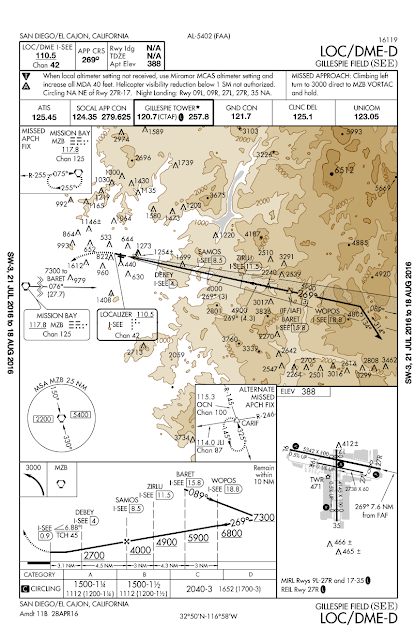Piper Cherokee (PA-28-161/A)
Hobbs:
0.7 hours
Landings:
4 (3 to a full stop to obtain night currency)
 |
| Panel fully lit |
It's been years since I have been up at night. Regardless, night is one of my favorite times to fly. The air is calm (unless there is some kind of storm present, coming, or going), it's peaceful, and it's magic flying above the city lights below. There are some risks, such as finding a place to land in the event of a failed engine, but otherwise, it's just as safe, if not more safe if you consider that it's easier to see other planes in the air with their lights on at night than it can be seeing them in daylight.
It's also just a better experience from the point of view that few others are typically out flying at night. You get the feeling you are all alone, you own the airport and the tiedown area.
The reason for making the flight was to get night currency. As a private pilot, I am able fly at night anytime - you have to have a couple hours logged night time as a part of getting your private pilot certificate. Night currency simply means needing 3 take offs and landings, to a full stop (not touch and go) within the prior 90 days, one hour after sunset or no less than one hour before sunrise, in order to take up passengers with you at night. A similar day currency also exists; 3 takeoffs and landings (touch and go are ok) within 90 days to take up passengers during the day. Having both allows you some flexibility - I can fly out to Catalina in the afternoon, and depart at sunset with passengers knowing that I am legal to do so.
Some notes:
- While cockpit lighting usually is enough to see the panel (see the image above), you need a flashlight (in case the panel lights go out, and to light areas away from the panel). I carry two, one that I wear on my head (advantages: I can't misplace it, and the light follows my head as I look around), and a nice smith and wesson led light that I store in the map/checklist pocket fore of the left seat.
- The flashlights must have a red lens as well as a white one. You'll need the white light for preflight and postflight duties, but while operating the plane, red is the color you'll want to shine from your lights. This is because there are dangers using white light due to the eye being better suited to red light at night. The main danger is if you are looking around the cockpit with a white light, and then gaze out the window into the night, your eyes will miss things as they adjust. This could have bad effects if you need to see something to avoid it, or for example at critical phases of the flight such as landing or takeoff, where vision at night is quite important. Your eyes adjust much faster in the case of red light (or no adjustment is needed at all, as the same part of your eye that sees in the dark is sensitive to red light).
- Good to know the runways and taxiways for the airport ahead of time at night, and have an airport diagram for reference. While the signs are lit and the blue runway markers will be present to identify taxiways and the like, it's not as easy to place yourself in the airport environment as it is during the daytime. MYF has some closed runways and taxiways due to reconstruction of runway 23/5, making this more critical.

